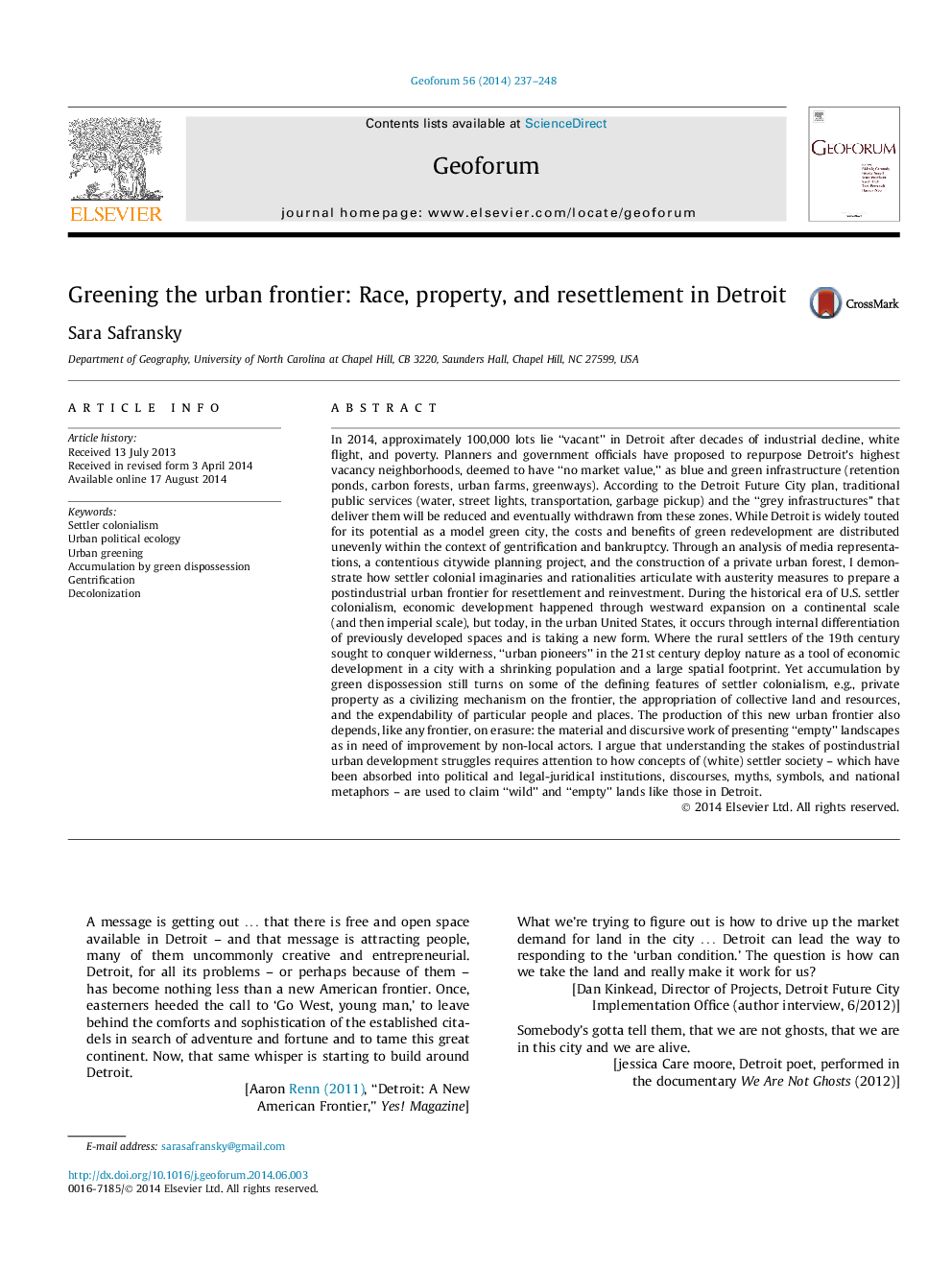| کد مقاله | کد نشریه | سال انتشار | مقاله انگلیسی | نسخه تمام متن |
|---|---|---|---|---|
| 5074056 | 1477133 | 2014 | 12 صفحه PDF | دانلود رایگان |
عنوان انگلیسی مقاله ISI
Greening the urban frontier: Race, property, and resettlement in Detroit
ترجمه فارسی عنوان
سبز کردن مرز شهری: مسابقه، اموال و اسکان مجدد در دیترویت
دانلود مقاله + سفارش ترجمه
دانلود مقاله ISI انگلیسی
رایگان برای ایرانیان
کلمات کلیدی
موضوعات مرتبط
علوم انسانی و اجتماعی
اقتصاد، اقتصادسنجی و امور مالی
اقتصاد و اقتصادسنجی
چکیده انگلیسی
In 2014, approximately 100,000 lots lie “vacant” in Detroit after decades of industrial decline, white flight, and poverty. Planners and government officials have proposed to repurpose Detroit's highest vacancy neighborhoods, deemed to have “no market value,” as blue and green infrastructure (retention ponds, carbon forests, urban farms, greenways). According to the Detroit Future City plan, traditional public services (water, street lights, transportation, garbage pickup) and the “grey infrastructures” that deliver them will be reduced and eventually withdrawn from these zones. While Detroit is widely touted for its potential as a model green city, the costs and benefits of green redevelopment are distributed unevenly within the context of gentrification and bankruptcy. Through an analysis of media representations, a contentious citywide planning project, and the construction of a private urban forest, I demonstrate how settler colonial imaginaries and rationalities articulate with austerity measures to prepare a postindustrial urban frontier for resettlement and reinvestment. During the historical era of U.S. settler colonialism, economic development happened through westward expansion on a continental scale (and then imperial scale), but today, in the urban United States, it occurs through internal differentiation of previously developed spaces and is taking a new form. Where the rural settlers of the 19th century sought to conquer wilderness, “urban pioneers” in the 21st century deploy nature as a tool of economic development in a city with a shrinking population and a large spatial footprint. Yet accumulation by green dispossession still turns on some of the defining features of settler colonialism, e.g., private property as a civilizing mechanism on the frontier, the appropriation of collective land and resources, and the expendability of particular people and places. The production of this new urban frontier also depends, like any frontier, on erasure: the material and discursive work of presenting “empty” landscapes as in need of improvement by non-local actors. I argue that understanding the stakes of postindustrial urban development struggles requires attention to how concepts of (white) settler society - which have been absorbed into political and legal-juridical institutions, discourses, myths, symbols, and national metaphors - are used to claim “wild” and “empty” lands like those in Detroit.
ناشر
Database: Elsevier - ScienceDirect (ساینس دایرکت)
Journal: Geoforum - Volume 56, September 2014, Pages 237-248
Journal: Geoforum - Volume 56, September 2014, Pages 237-248
نویسندگان
Sara Safransky,
